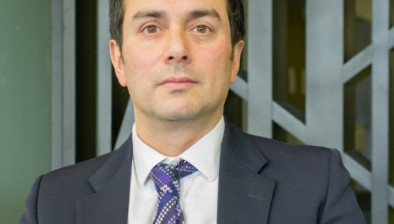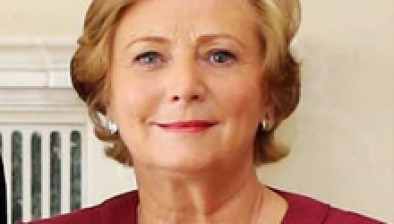Court of Appeal: 10-year sentence upheld for 21-year-old man who engaged in sexual relationship with 13-year-old girl

The Court of Appeal has upheld a 10-year sentence imposed on a man who entered into a coercive sexual relationship with a 13-year-old girl. The girl had a child with the man during the abuse. The accused had pleaded guilty to one count of the defilement of a child and one count of sexual assault.

About this case:
- Citation:[2023] IECA 42
- Judgment:
- Court:Court of Appeal
- Judge:Ms Justice Isobel Kennedy
Delivering judgment in the case, Ms Justice Isobel Kennedy held that the sentencing judge had not made an error in principle when sentencing the accused. The headline sentence of 12 years’ imprisonment was appropriate having regard to the complainant’s young age, the long period of offending and the coercive nature of the relationship.
Further, the court noted that the sentencing judge suspended the final two years of the sentence, which left an effective term of imprisonment of eight years. This met the justice in the case and accordingly, the appeal against sentence was dismissed.
Background
At the time of the offending, the accused was a 21-year-old man. While he claimed that he initially thought the complainant was older than 13, he quickly learned of her true age. The began a sexual relationship in late 2005 and continued for approximately three years.
The girl became pregnant in 2007 when she was 15 years old. After giving birth, the hospital reported the matter to gardaí but no investigation took place due to the wishes of the complainant and her mother. No action was taken and the complainant continued to be in the relationship until she was 16 years old.
In 2020, the complainant made a statement to gardaí. Her daughter was 12 years old and she had become concerned at the thought of her entering a similar relationship. She had reflected on her own youth during the relationship and described the jealousy and obsession of the accused. Further, she outlined that he physically assaulted her at times, causing black eyes, bruising and a broken nose.
The accused was charged with one count of the defilement of a child under the age of 15 and one count of sexual assault. He pleaded guilty to these offences.
At the time of sentencing, the accused had two children aged 14 and 10. He had previous convictions for road traffic matters, drugs offences and public order offences which were all summarily tried. He had no previous convictions for sexual offences.
The sentencing judge outlined the aggravating factors in the case, which included the large age disparity, the clear awareness of the age gap, the length of time that the offending persisted, the pregnancy and the coercive control exercised over the complainant.
In mitigation, the court considered the early guilty plea, the cooperation with the investigation, his apology, expression of remorse and the assessment that he was at a moderate-to-low risk of reoffending.
The court imposed a headline sentence of 12 years’ imprisonment. Taking into account the mitigating factors, the sentence was reduced to 10 years with the final two years suspended to encourage rehabilitation. The accused appealed the sentence as being unduly severe.
Court of Appeal
The court began by outlining the submissions of the accused. It was argued that the reduction afforded from the headline sentence only represented a 16 per cent decrease in sentence. It was said that this was a departure from sentencing norms having regard to the level of mitigation in the case. It was said that the custodial sentence would have a negative impact on the accused’s relationship with his children and that insufficient weight was attached to this.
The accused relied on the well-known principle that a suspended sentence was still a sentence imposed by a court and this had to be taken into account when considering a reduction in sentence (Elliot v Harris (No.2) (1976) 13 SASR 516). Further, the accused sought to rely on a comparator case in which a 50 per cent discount was applied to similar offending (see People (DPP) v JMcD [2021] IECA 31).
In considering whether the 12-year headline sentence nominated by the judge was correct, the court distinguished the JMcD case. It was said that there were a number of differentiating factors, which included that the accused was a minor, the offending was only two instances of defilement and involved video recordings of the offending. Accordingly, the court held that the JMcD case was of very limited value as a comparator case.
The court noted that JMcD outlined that a majority of cases involving a maximum penalty of life imprisonment would usually involve “an effective 15 year” scale. However, a court could not lose sight of the fact that life imprisonment was the maximum sentence.
In this case, the defilement of a child carried a maximum sentence of life imprisonment, which reflected how society viewed such a crime. The offending took place for a protracted period which included occasional violence towards the complainant. The age disparity was indicative of domination or exploitation by the accused in the case (see JMcD).
While members of the court may have nominated a slightly lower headline sentence, the sentencing judge’s decision dell within the margin of appreciation afforded to a trial nudge, the court said.
The court acknowledged that the 16 per cent reduction in sentence was “somewhat low” but the accused was not of good character with previous convictions. Again, the reduction for mitigation fell within the margin of appreciation.
It was noted that the final two years of the sentence were suspended, which lead to an overall reduction from the headline sentence of 33 per cent and an effective sentence of eight years. Although a suspended sentence was still a sentence, the court was satisfied that the final tally met the justice of the case.
Conclusion
There was no error in principle in the sentence. Accordingly, the court upheld the 10-year sentence with the final two years suspended.
The People at the Suit of the Director of Public Prosecutions v. P.N. [2023] IECA 42











